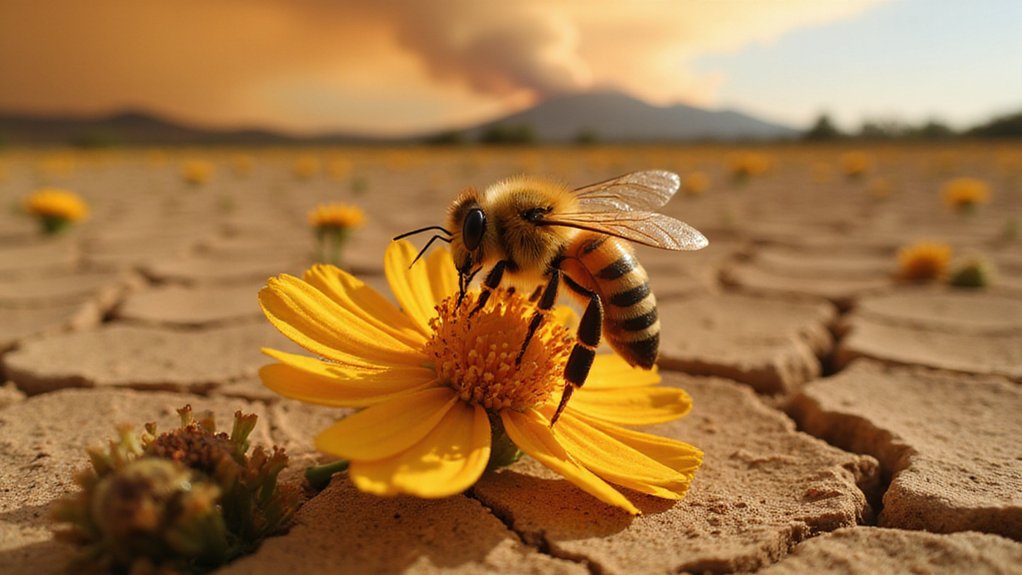While climate change and habitat loss threaten bee populations worldwide, these essential pollinators aren’t going down without a fight. Nature’s tiny workhorses are adapting, though it might not be enough. Scientists have developed synthetic pollen-replacing food that functions like “Power Bars” for bees, delivering essential nutrients when natural pollen supplies dwindle. Thank goodness someone’s thinking ahead. The innovative food source contains isofucosterol, a nutrient identified as critical for honey bee survival.
Urban sprawl and extreme weather have decimated natural flower diversity. No flowers, no food. It’s that simple. The lack of nutritional variety has directly contributed to colony collapse – that terrifying phenomenon where bees just vanish. Commercial beekeepers are fighting back with nutrition supplementation, which has shown promising results for colony resilience. Who knew bees needed supplements too?
Flowers vanishing means bees starving. Colony collapse isn’t inevitable—supplemental nutrition offers hope for our buzzing allies.
Land management practices are changing the game. Cover cropping alters soil nutrient profiles, which affects pollen protein content. Less protein means weaker bees. Ironic, isn’t it? Conservative farming practices improve soil health but might actually reduce bee nutrition. Agricultural intensification further destabilizes food sources. It’s a lose-lose situation. Transitioning to renewable energy sources could help reduce greenhouse gas emissions that contribute to the extreme weather patterns destroying bee habitats.
Evolution has given bees some tricks. “Winter bees” develop larger fat reserves and cluster together for warmth. Smart. But with temperatures rising at breakneck speed, these adaptations become useless fast. Native bee species are being forced northward, their habitats shrinking by the day. Erratic weather patterns don’t help either.
The science community isn’t sitting idle. Gene editing and genome engineering could potentially restore lost genetic diversity. Traditional conservation methods often fail to replenish the genetic variants bees need to survive. Without genetic diversity, bee populations remain vulnerable to new diseases and environmental stressors. Research shows that microalgae like spirulina and Chlorella can serve as beneficial feed additives for honey bees, providing essential nutrients and improving their immunity.
As agricultural biotechnology advances with disease-resistant crops, similar approaches might help our buzzing friends. Genetic interventions could reverse the loss of adaptability, giving bees a fighting chance against rapidly changing conditions. The clock is ticking, though. These interventions need to happen fast, or we might be telling the next generation about the bees that used to exist.









